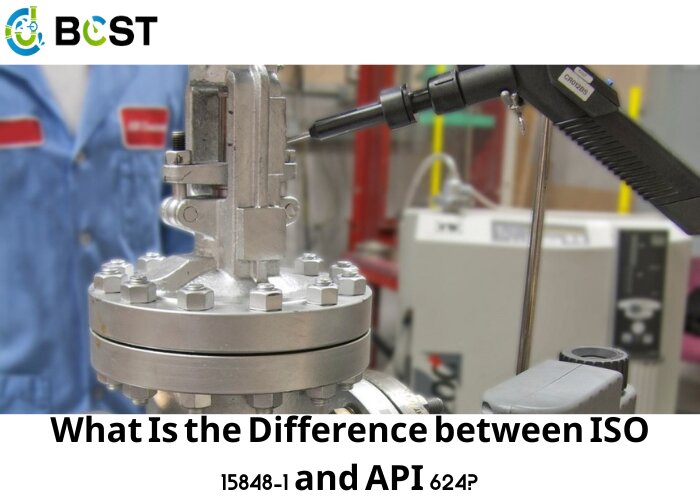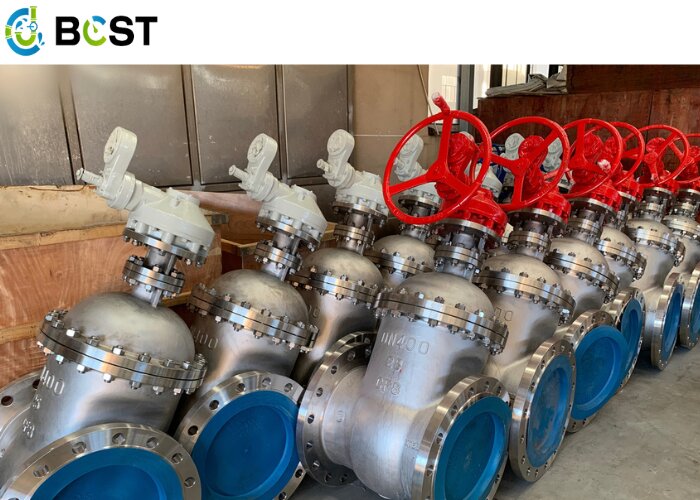
Valves used in companies such as petroleum refineries or chemical plants have strict requirements for leakage and are heavily regulated. However, the role of standards for valve leakage in midstream processes is ambiguous to both end users and manufacturers. Without clear regulations for midstream valve companies, valves only in companies have to be based on standards such as ISO 15848-1 and API 624 loosely on leakage control judgment. Many end users do not know the difference between 15848 and 624.
What is the difference between ISO 15848-1 and API 624?

There are several key differences between the two standards, although both are considered to be the most widely accepted international standards for valve leakage testing.
Test Temperature
One of the biggest differences between the API 624 and ISO 15848-1 standards is the temperature at which the test is performed. while API 624 requires three thermal cycles from room temperature to 500 degrees Fahrenheit, ISO 15848-1 allows manufacturers to choose from a number of different temperature levels.
Measurement
-API 624 requires a focus on the performance of the packing in the valve, while ISO 15848-1 focuses on the entire valve as a whole. The general definitions are as follows.
-API 624 is a valve-type test designed to evaluate the performance of a valve’s stuffing box/stem interface while using a packing set that was previously API 622 compliant, measuring leaks at other joints only to correct them and noting their potential impact on detected leaks.
-ISO 15848-1 specifies test procedures for evaluating stem seals and external leakage from isolation and control valve body joints for volatile air contaminants and hazardous fluids.
Test Pressure
API 624 has a maximum test pressure of 600 psi or the maximum working pressure of an ANSI rating. For example, an ANSI 150 with a working pressure of 285 psi would be tested at this condition. the ISO standard would be tested at the maximum allowable working pressure for the selected temperature class of the ANSI grade of the test valve. For example, an ANSI 900 grade of a given material grade would be tested at 2220 psi, which is significantly higher than 600. From this standpoint, it can be argued that ISO 15848-1 is more stringent, but it is important to look at the many variables between tests one by one Is the leakage rate comparable to that of the leakage allowance of API 624?
Range of Tests
Another important difference to note between API 624 and ISO 15848-1 is the scope of the standard. the ISO 15848-1 standard applies to isolation and control valves is very broad in scope and is used to categorize valve performance levels in the area of unorganized venting. the scope of API 624 is much narrower in that it is used specifically for valves with graphite packings. Look at the difference between ISO’s 2500 cycles and API’s 310 cycles. the ISO is more stringent but the API provides the simplicity of a single pass or fail point. ISO 15848-1 requires the end user to recognize the difference between performance class markings and Thermal Cycling.
The thermal cycling itself is also quite different. the ISO offers different temperature ranges and corresponding thermal cycles. so this means that when performing mechanical cycling you will be specifying multiple thermal cycles that the valve must undergo. the API 624 requires 310 mechanical cycles including three thermal cycles. the ISO provides a range of temperatures and corresponding thermal cycles. If the test is fully completed, ISO has two thermal cycles per durability class, for a total of six.
Test Media
The test media used varies depending on the standard process. API 624 uses methane because it is the only permitted test fluid. iso allows the use of methane or helium, and iso does differentiate between the limits of each based on stem size and sealing class in terms of permissible leakage rates. For this reason, the acceptance criteria for API 624 and ISO 15848-1 are also different. API 624 sets an allowable flat volume limit of 100 ppmv per measurement for the entire test, “in contrast to the more pass/fail style approach of the API, the intent of ISO is more about defining a fugitive emissions metric by which your valve can be measured and then compared, and testing simply catalogs its performance within that range.
Since the valve industry is centered around hydrocarbons and methane is readily available, it is widely considered the standard because it has always been used. Considerations for testing fluids include knowing the end user’s preferences and safety precautions, as methane has hazards not found in helium






